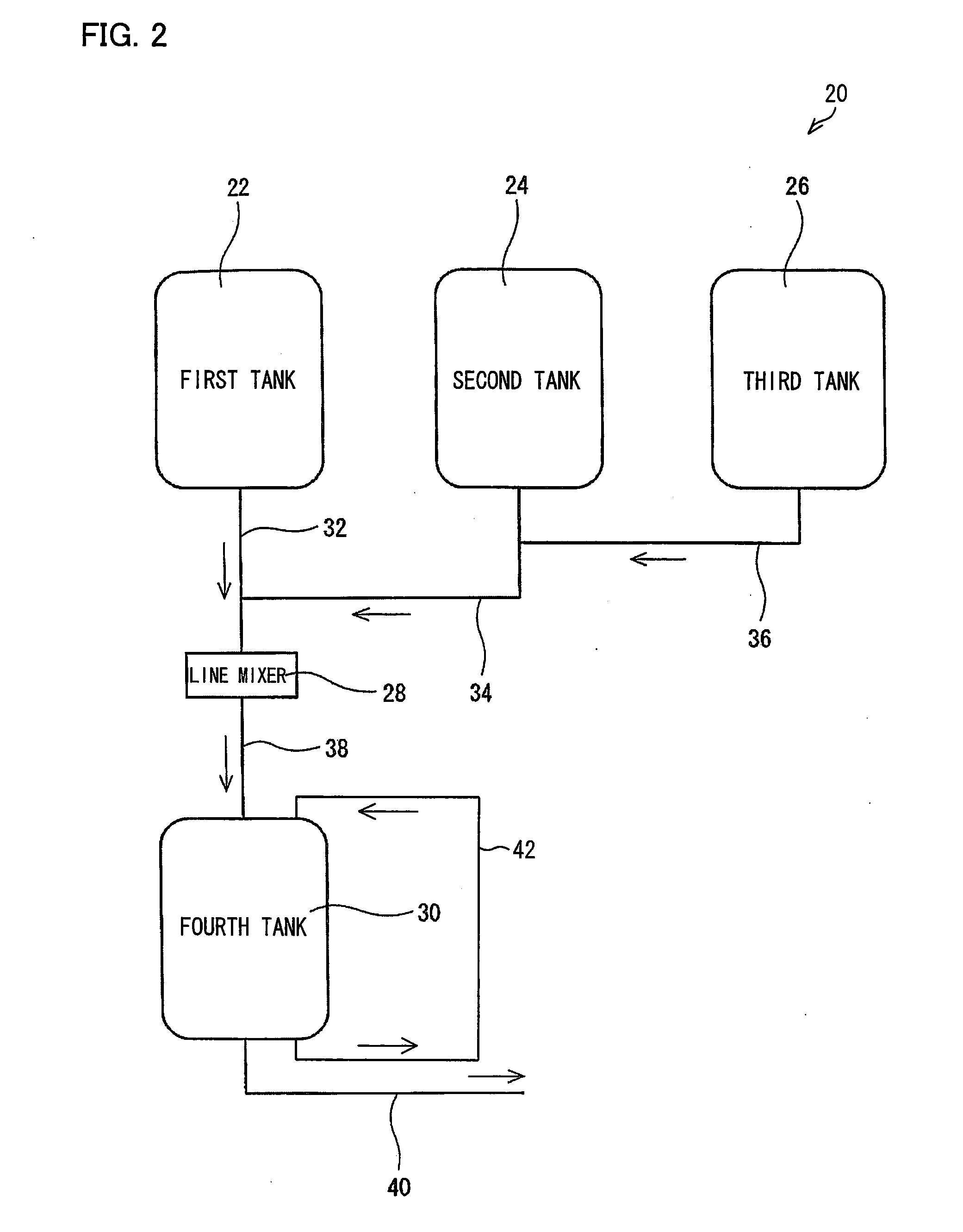Method for producing particulate water absorbing agent containing water absorbent resin as main component
a technology of water absorbent resin and water absorbing agent, which is applied in the direction of ph-change process, transportation and packaging, and can solve the problems of large amount of such aqueous solution, not only uneconomical, and impair the function of the polymerization initiator, so as to improve the properties of the target particulate water absorbant, improve the quality of the particulate water absorbant, and improve the quality. stability
- Summary
- Abstract
- Description
- Claims
- Application Information
AI Technical Summary
Benefits of technology
Problems solved by technology
Method used
Image
Examples
example 1
[0231]A particulate water absorbing agent was continuously produced at approximately 1800 kg / hr with production equipment which included respective apparatuses for the polymerizing step (including pulverization), the drying step, the pulverizing step, the classifying step, the surface cross-linking step (including a step for spraying a surface cross-linking agent and a step for heating it), the cooling step, the additive adding step, the granulating step, and the storing / filling step. The apparatuses were connected to one another so that the above steps were carried out continuously. The following description deals in detail with a method of the production.
[0232]First prepared was a reactor constituted by a lidded double-arm kneader (made of stainless steel) having two sigma blades and an attached jacket. In this reactor, a monomer aqueous solution having a concentration of 37 mass % was poured. The monomer aqueous solution contained an acrylic acid and acrylic acid sodium salt as a...
example 2
[0238]An operation was carried out in the same manner as in Example 1, except that a polymerization initiator aqueous solution for use in the polymerizing step of Example 1 was prepared with the apparatus 2 illustrated in FIG. 1. Specifically, to add 0.12 g of sodium persulfate to 1 mol of the monomer, (i) a 30 mass % sodium persulfate aqueous solution was prepared in the first tank 4, (ii) water was then continuously added to the aqueous solution, and (iii) a resulting mixture was mixed in the line mixer 6, so that a 2 mass % sodium persulfate aqueous solution was obtained in the second tank 8. The polymerization was continuously carried out with use of the 2 mass % sodium persulfate aqueous solution. The polymerization had a stable induction period and peak temperature period of approximately 30 seconds and 10 minutes, respectively. After the polymerization, drying was carried out in the same manner as in Example 1. This provided water absorbent resin particles (2) having a stable...
PUM
| Property | Measurement | Unit |
|---|---|---|
| pressure | aaaaa | aaaaa |
| particle diameter | aaaaa | aaaaa |
| temperature | aaaaa | aaaaa |
Abstract
Description
Claims
Application Information
 Login to View More
Login to View More - R&D
- Intellectual Property
- Life Sciences
- Materials
- Tech Scout
- Unparalleled Data Quality
- Higher Quality Content
- 60% Fewer Hallucinations
Browse by: Latest US Patents, China's latest patents, Technical Efficacy Thesaurus, Application Domain, Technology Topic, Popular Technical Reports.
© 2025 PatSnap. All rights reserved.Legal|Privacy policy|Modern Slavery Act Transparency Statement|Sitemap|About US| Contact US: help@patsnap.com



